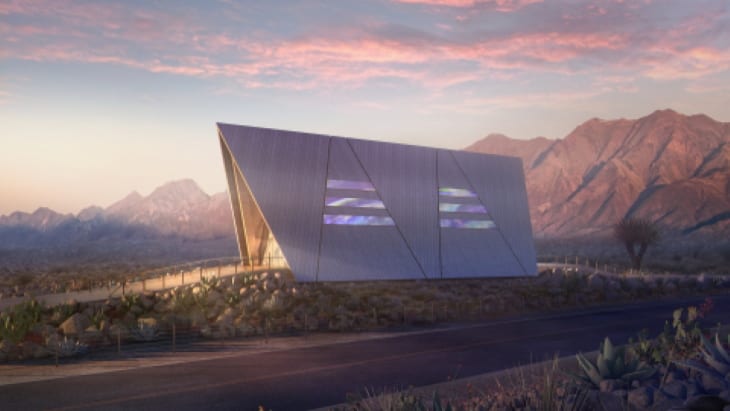Oklo Microreactor Is INL’s Pick for First-of-a Kind HALEU-Fueled Nuclear Demonstration
Credit to Author: Sonal Patel| Date: Wed, 19 Feb 2020 17:51:24 +0000
The post Oklo Microreactor Is INL’s Pick for First-of-a Kind HALEU-Fueled Nuclear Demonstration appeared first on POWER Magazine.
Oklo, developer of a 1.5-MW passive compact fast reactor, will be the first to receive high-assay, low-enriched uranium (HALEU) nuclear fuel from Idaho National Laboratory (INL) to aid a first-of-its-kind demonstration of its Aurora microreactor, which could begin in 2024.
Marking a significant boost for advanced nuclear innovation, which industry experts are banking on to transform nuclear’s future role in a rapidly changing power sector, INL on Feb. 19 said that it will give the Silicon Valley–based advanced nuclear reactor developer access to processed and treated used fuel recovered from the now-decommissioned Experimental Breeder Reactor-II (EBR-II).
Downblended to a uranium enrichment of less than 20%, and still owned by the Department of Energy (DOE), the HALEU will stay at INL’s site in Idaho Falls, Idaho, where Oklo last year received a site use permit to build its Aurora plant. The site use permit, which will be effective for the lifetime of the plant, was the first, and still the only, such permit issued for a non-light-water nuclear reactor in the U.S.
According to INL, while finalization of the opportunity announced on Wednesday still depends on striking a cooperative agreement with Oklo on the use of the material for the micro-reactor demonstration, the selection is a big step that markedly furthers its goal to accelerate deployment of commercially viable micro-reactors. Several micro-reactors with capacities below 10 MW (by comparison, small modular reactor [SMR] capacities hover between 60 MW and 300 MW) are under development worldwide; one of the biggest hurdles to quick deployment relates to fuel supply.
The Nuclear Energy Institute (NEI) notes that the commercial nuclear fuel industry currently only produces fuel enriched up to 5% by weight of U-235, but that some micro-reactors will use fuel enriched up to 20% by weight of U-235, known as “HALEU.” But because establishing a commercial supply of HALEU would require sufficient demand and a minimum of 7 years to develop fuel cycle infrastructure, the industry trade group has urged the DOE for years to tap into its access of high-enriched uranium and downblend it in the interim to supply HALEU for demonstration purposes.
As Dr. John Wagner, associate laboratory director for INL’s Nuclear Science & Technology directorate, noted on Wednesday, the benefit of using nuclear fuels with higher levels of U-235 is that it allows reactors to operate for years without having to be refueled. “That is an important attribute since this technology is envisioned to be used in remote areas that can be difficult to access.”
Oklo, a company founded in 2013, is named for a Gabonese region known for its naturally occurring deposits of fissile U-235. The company launched the concept of its Aurora design in December, describing it as a “fission battery” which uses metallic fuel and can produce both heat and power. The concept was inspired by a NASA image that showed aurorae on earth from space. “We were inspired to see how both the beauty of the earth and current human energy needs, as well as human potential and the beauty of space, could be symbolized by the aurora dividing the lights on the earth from the lights from the stars. We are excited to think about how fission could both enable human development while preserving the environment on earth, and even enable deeper space exploration,” said Caroline Cochran, chief operating officer and co-founder of Oklo.

Jacob DeWitte, Oklo co-founder and CEO, recently told POWER in an exclusive interview that the company, which has been engaged in pre-application activities with the Nuclear Regulatory Commission (NRC) since 2016 for the Aurora design, will be submitting a license application in the coming week. “We’re looking at a review time schedule that is in the order of two years, possibly even better than that.” As to when the demonstration at INL could begin, he said Oklo is not ready to be specific yet. “Generally speaking, the time range of 2022 and 2024 is where we’re looking at, somewhere in that range.”
As DeWitte also noted, when Oklo submits the license application submission to the NRC, it will be for the nation’s first civilian effort geared to a micro-reactor and non-water reactor. Getting the first site use permit from INL and having the opportunity to work with the HALEU is already “a pretty big step to lining up all the key pieces to be able to demonstrate something in the very early 2020s,” he said.
—Sonal Patel is a POWER senior associate editor (@sonalcpatel, @POWERmagazine)
The post Oklo Microreactor Is INL’s Pick for First-of-a Kind HALEU-Fueled Nuclear Demonstration appeared first on POWER Magazine.